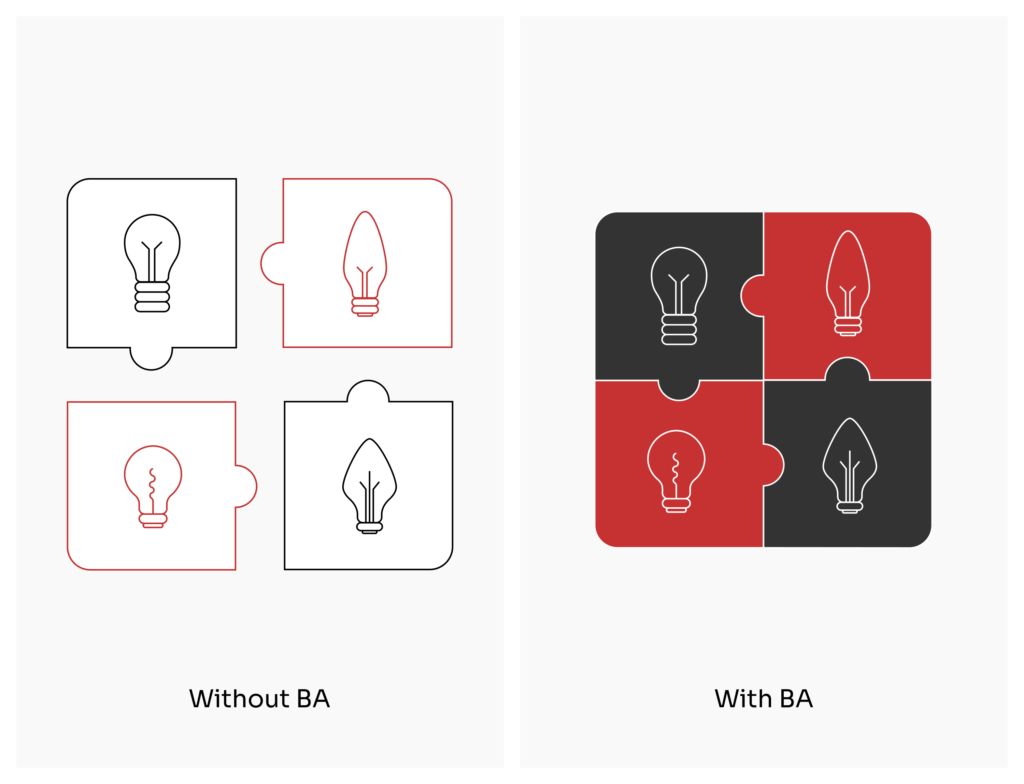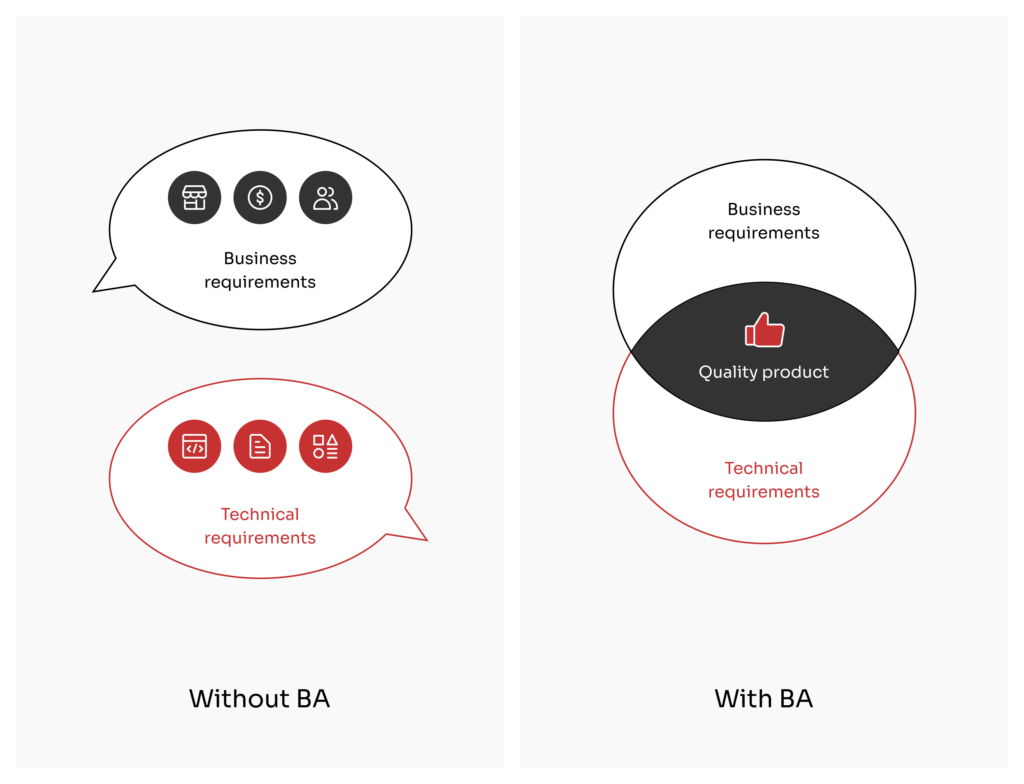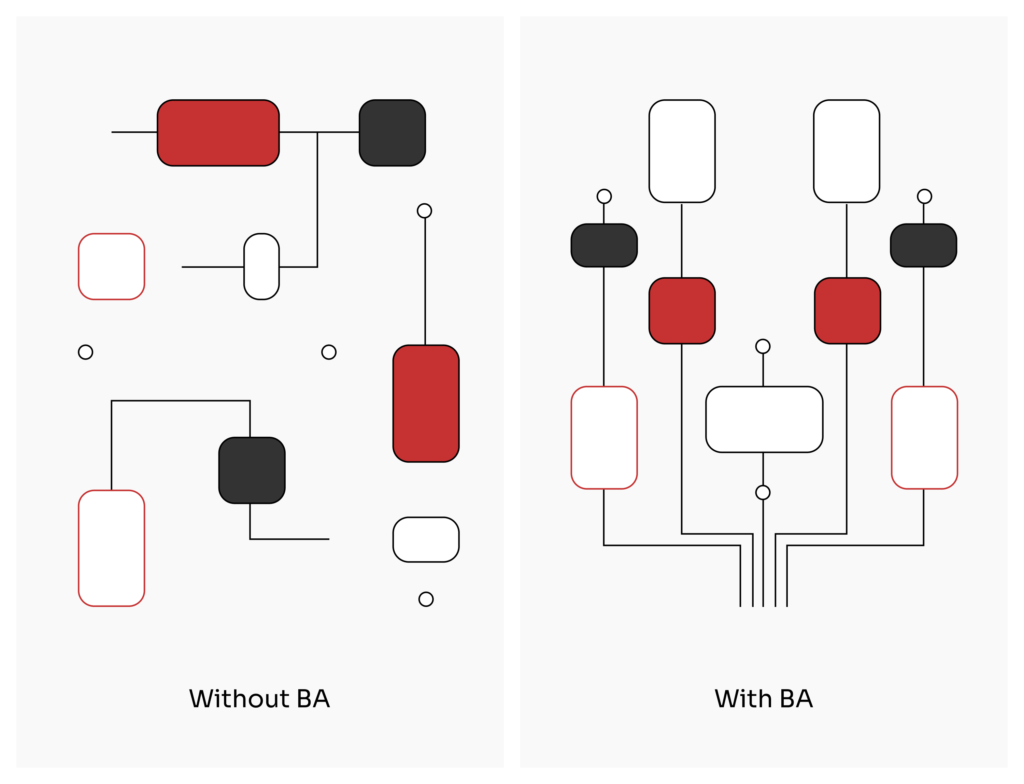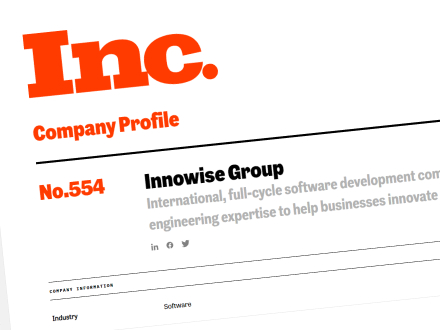Your message has been sent.
We’ll process your request and contact you back as soon as possible.
The form has been successfully submitted.
Please find further information in your mailbox.



To create accurate project requirements, business analysts need to identify the needs of a particular business first. The business need itself is an overall aiming vector of a product drawn by either a problem (e.g. poor coordination of couriers in a delivery service) or an opportunity (like creating a more comfortable and secure way of performing online payments if compared to the competitors).
This very basic business need shows the overall direction in which the business wants to go and how the software should assist. This is a vital point that business analysts constantly keep in mind when creating project requirements, and they adapt every piece of documentation to meet it.


If covering vital functions and preventing unpleasant expenses mentioned above isn’t convincing enough, let’s look at another piece of statistics. Business Analysis Benchmark states that by implementing effective processes of working with requirements companies gain such benefits as
Let us share a few examples of how we helped our clients cut development costs through business analysis.
One of our clients wanted to build their own DeFi (decentralized finance) platform operated by a custom token and possessing quite wide functionality. At first, they didn’t want to get a business analyst on board so we started working just with a project manager, a designer, and several software developers.
It turned out that the project could not be developed in this way and the team spent a lot of time holding regular meetings because the client couldn’t provide clear requirements for the project. As we knew this approach wasn’t going to produce results, we strongly suggested working with one of our Business Analysts.
Our client agreed to this experiment and started working closely with our BA specialist. As a result, they were pleasantly surprised by how rapidly all their ideas and goals turned into clear requirements and direct tasks spread over the whole team. The development process began to accelerate and frequent communication became unnecessary. No time or resources were lost resulting from misunderstandings from that point forward, and the project is actively progressing.
For now, the product is out of beta and we’re working on adding new features and modules to build a whole ecosystem for the product.
We had a client who wanted to develop a mobile application from scratch. Before contacting us, they were working on it with a couple of friends, one was a designer and another one was a mobile developer.
After reviewing the project, our experts observed that the product owner described the app concept to the team, the designer created mockups, and the developer implemented the functionality. During the testing process, they discovered it lacked several more functions and some present ones were implemented incorrectly, so they had to start over.
We suggested trying to work with a business analyst as a part of the team. At first, the client declined this proposal. When they finally decided on augmenting the existing team with a BA specialist, the work got in full swing. After a month of working with a Business Analyst, the client noticed how effective and structured the process became.
There was no more need in making dozens of different designs for the project as well as no need for redesigning the solution and reworking its functionality. As a result, the cost of developing the app was significantly reduced.
Innowise has several projects (both ongoing and completed) where Business Analysts act as project managers as well.
Due to their deep understanding of the project specifications and processes, Business Analysts know which tasks to prioritize and how to solve certain problems. When it comes to small development teams (around 5-7 people), we at Innowise recommend augmenting teams with business analysts. In large projects, there’s a high chance of a BA being full-time busy with tasks, requirements, and other BA functionality. For such projects, we suggest getting a dedicated project manager on board.
In agile projects, a Business Analyst can be a lifesaver. While the product owner, stakeholders, and the development team think big, business analysts easily decompose these big ideas into tiny tasks. Since agile is all about constant improvement through small and frequent releases, this allows pointing out the very core functionality required for a proof of concept or an MVP product without any redundant features.
Apart from saving time and effort while releasing the first product iteration, business analysts also organize and schedule the upcoming feature drops for the project which saves project management time and cuts down on rework.
Also, business analysis specialists provide the team with clear feature requirements and acceptance criteria which makes the quality assurance process faster.
Both business analysts and project managers play an important role in the software development lifecycle.
Although they may seem similar at first glance, their functionality is quite different when compared in depth.
Even though both specialists handle communication with the client and the development team, their roles are different. Project managers are some sort of team supervisors that ensure everything goes according to plan and that no obstacles impede progress.
The business analyst’s communication with the client and team serves a completely different purpose. They gather all the possible information to process it into clear requirements, instructions, and acceptance criteria.
Consequently, business analysts provide both the team and the stakeholders with documentation that’s easy to understand and visualize even when the solution at the concept stage.
So, while project managers cover the development processes from the communication side since it’s their main function, business analysts utilize communication as a tool for performing their main role – preparing clear project documentation.
The statistics say that in most cases an IT project will fail or incur unnecessary expenses if there’s no business analyst on board.
We can’t say that there’s no chance of success at all, but when developing software we always aim at providing our client with the most reliable and effective services and software development frameworks. So we strongly suggest considering having a business analyst on your team.
But the final choice is up to you. If you feel the capability of managing software development processes in terms of documentation and requirements, you most definitely can try. And if something goes wrong, our team is always here to cover your needs.
Rate this article:
4.8/5 (45 reviews)












Your message has been sent.
We’ll process your request and contact you back as soon as possible.

By signing up you agree to our Privacy Policy, including the use of cookies and transfer of your personal information.